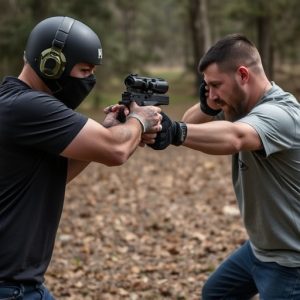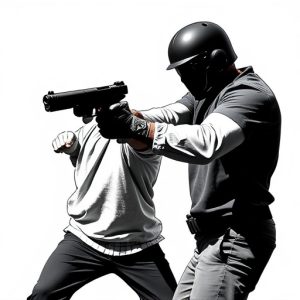Projectile vs Contact Stun Weapons: Range, Safety, & Manufacturer Comparisons
Stun weapons, critical for self-defense, come in two main types: projectile (stun guns, bean bag rou…….
Stun weapons, critical for self-defense, come in two main types: projectile (stun guns, bean bag rounds) and contact (tasers, stun batons). Projectile weapons offer distance advantage but reduced impact with range, while contact weapons require closer proximity for effectiveness. Top manufacturers like Taser International, Oleac, and APW Global innovate in accuracy, power, and safety standards, making them the most reliable stun gun manufacturers. Choosing the right stun weapon involves understanding their features, training requirements, and the landscape of these leading manufacturers.
In the realm of personal defense, stun weapons have emerged as powerful tools. This article delves into the nuanced world of projectile and contact stun weapons, exploring their definitions, mechanisms, advantages, disadvantages, range, accuracy, safety, and user training. We also shine a spotlight on top reliable stun gun manufacturers and their offerings, providing an indispensable resource for informed decisions in today’s digital era.
- Understanding Projectile and Contact Stun Weapons: Definitions and Mechanisms
- Advantages and Disadvantages of Each Type: A Comprehensive Analysis
- The Role of Range and Accuracy in Weapon Effectiveness
- Safety Considerations and User Training for Both Types
- Top Reliable Stun Gun Manufacturers and Their Offerings: A Comparison
Understanding Projectile and Contact Stun Weapons: Definitions and Mechanisms
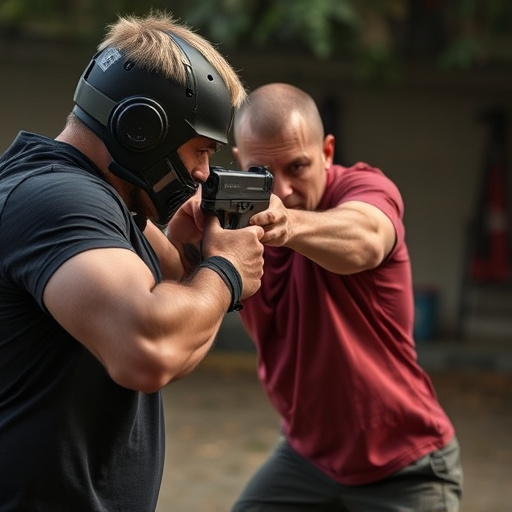
Stun weapons are a category of self-defense tools designed to temporarily incapacitate an assailant, providing users with a crucial moment to escape or render them helpless. These devices operate through two primary mechanisms: projectile and contact stun. Projectile stun guns, as the name suggests, fire a round that makes physical contact with the target at a distance. Typically powered by springs, compressed air, or electricity, these weapons deliver a powerful impact, causing muscle spasms and sensory overload, which can leave an attacker momentarily stunned. The most reliable stun gun manufacturers prioritize safety features and high-quality components to ensure the effectiveness of their products.
Contact stun devices, on the other hand, rely on direct contact with the target’s body. These include stun batons, tasers, and electroshock weapons. When activated, they discharge an electric current through metal prongs or probes, disrupting the neural signals in the body, resulting in a powerful neuromuscular response. This reaction renders the assailant immobile for several seconds, providing users with a safe escape. Trusted stun weapon brands consistently innovate to enhance effectiveness while adhering to safety standards, making them valuable tools for personal protection and law enforcement applications.
Advantages and Disadvantages of Each Type: A Comprehensive Analysis
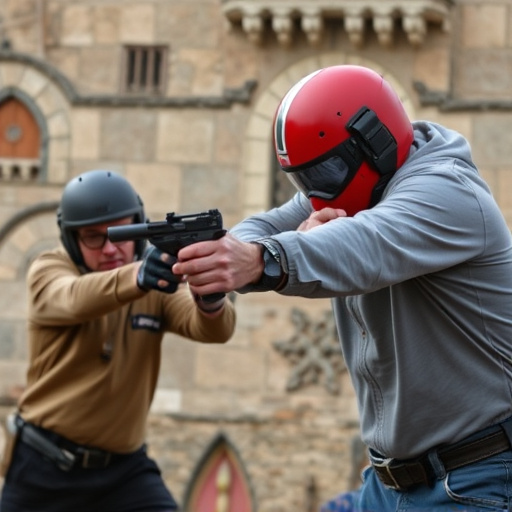
Advantages and Disadvantages: Projectile vs Contact Stun Weapons
Projectile Stun Weapons: These devices, like stun guns or bean bag rounds, offer a non-lethal way to incapacitate a target from a distance. Their main advantage is precision; users can aim for specific areas without direct contact, making them ideal for self-defense scenarios where minimizing injury is crucial. Additionally, they are less likely to cause permanent damage and have shorter recovery times compared to contact weapons. However, the range is limited, and factors like weather conditions or target movement can affect accuracy. Moreover, the effectiveness depends on hitting vital areas, which might not always be possible at a distance.
Contact Stun Weapons: Tools such as stun batons or hand-held tasers excel in close-quarters situations where direct contact is feasible. They provide immediate and powerful shocks, ensuring rapid incapacitation. The primary advantage lies in their versatility; they can be used from various angles and are less affected by external factors like weather. However, these weapons may cause more severe injuries over time due to their high-voltage output. Additionally, proximity increases the risk of electrocution for both the user and bystanders, necessitating proper training and caution from the most reliable stun gun manufacturers.
The Role of Range and Accuracy in Weapon Effectiveness
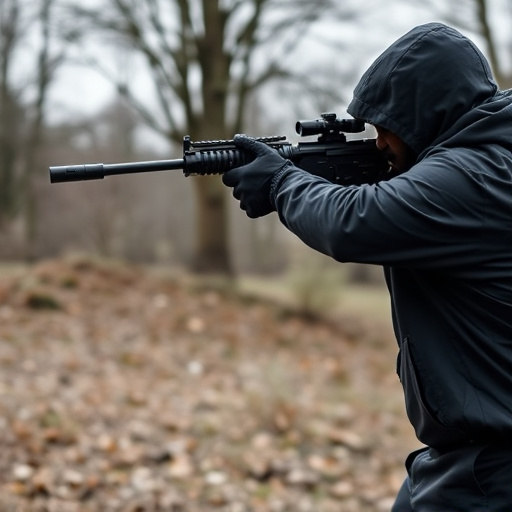
In the realm of personal defense, the effectiveness of a stun weapon is significantly influenced by its range and accuracy. Projectile stun weapons, such as stun guns or tasers, rely on distance to disable targets, with their impact diminishing the further they travel. However, these tools offer a clear advantage in terms of reach—they can stop an assailant from a safe distance, making them popular choices among those seeking non-lethal self-defense options. Manufacturers like Pepper Spray and Taser International, known for their most reliable stun gun models, prioritize accuracy to ensure users can deploy these weapons effectively.
On the other hand, contact stun devices, like electric stun batons or stun sticks, operate by delivering a direct electric shock when touched or held against an attacker. Their effectiveness hinges on the user’s ability to make physical contact, which demands closer proximity. While this might seem like a disadvantage in terms of range, it also means users have more control over the situation. Top-tier stun weapon manufacturers are acutely aware of this dynamic, producing devices with advanced electrical systems and ergonomic designs that enhance both power and precision, ensuring users can rely on their weapons to work as intended in critical moments.
Safety Considerations and User Training for Both Types
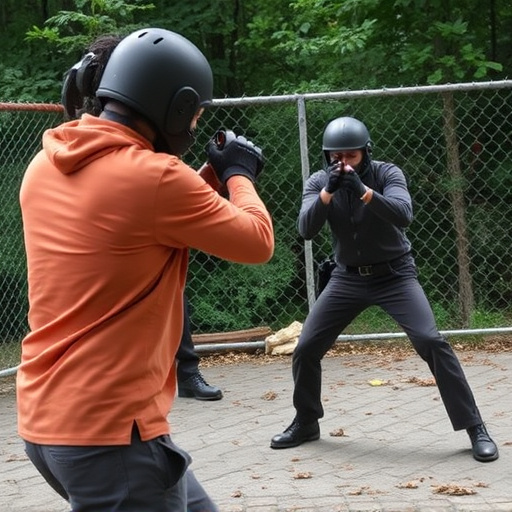
When considering either projectile or contact stun weapons, safety should always be the top priority. Both types require proper user training to ensure effectiveness and minimize risks. For projectile stun devices like tasers, users must receive instruction on safe targeting, aiming, and firing distances to avoid collateral damage or injury to bystanders. Additionally, understanding the weapon’s range and power settings is crucial to managing situations effectively.
Contact stun weapons, such as stun bats or electric cues, necessitate training in proper handholding, swing techniques, and proximity to target. Users must learn to apply the correct amount of force without causing permanent injury. Reputable manufacturers like those from most reliable stun gun manufacturers often provide comprehensive user manuals and safety guidelines to ensure responsible use. Regular practice sessions under controlled conditions are recommended for both types to build confidence and muscle memory in handling these tools.
Top Reliable Stun Gun Manufacturers and Their Offerings: A Comparison
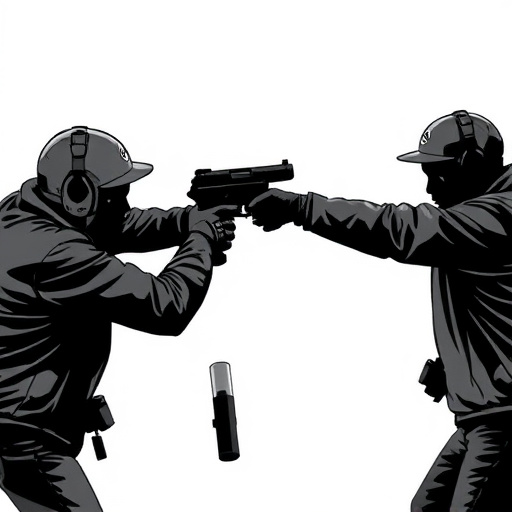
When it comes to choosing between projectile and contact stun weapons, understanding the landscape of reputable manufacturers is key. Among the most reliable stun gun manufacturers, Taser International stands out for its advanced technology and extensive law enforcement presence. Their stun guns, like the X26P, offer powerful, long-range incapacitation with a range of up to 15 feet (4.5 meters). Another leading manufacturer is Oleac, known for their compact, high-voltage devices designed for personal protection. The Oleac O-300, for instance, combines durability and ease of use, making it a popular choice among civilians.
Additionally, APW Global has carved a niche with innovative, non-lethal weapons that blend versatility and reliability. Their StunBat and similar models are suitable for various scenarios, from self-defense to crowd control. Each manufacturer offers unique features, ensuring users have options tailored to their specific needs and preferences. When selecting a stun gun, evaluating these top manufacturers and their offerings allows buyers to make informed decisions based on factors like power, range, size, and reliability.
In the quest for personal safety, both projectile and contact stun weapons offer unique solutions. Projectile weapons excel in range and accuracy, making them ideal for distant deterrence, while contact stun devices provide immediate close-range effects. Understanding their mechanisms, advantages, and disadvantages is key to informed decision-making. When choosing a stun device, it’s crucial to consider safety features and user training. Among the top reliable stun gun manufacturers, each offers specialized products catering to diverse needs. Ultimately, selecting the right weapon depends on individual preferences, environmental factors, and ensuring its effectiveness as a safety tool.
